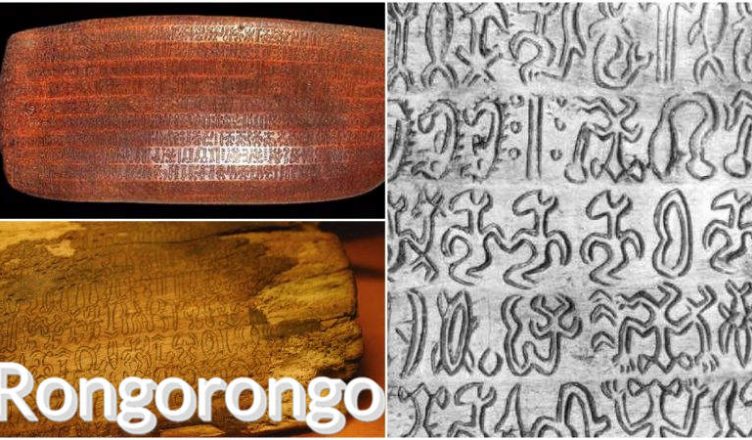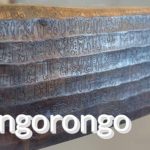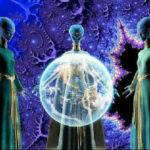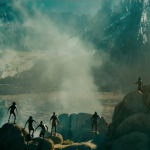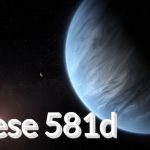In the South Pacific lies Easter Island, a place filled with mysteries and enigmas, and home to a captivating array of stone head sculptures. These colossal stone heads have long intrigued researchers because of their immense size and the incredible feat of transporting them from quarries located at least 11 miles away, all without the use of wheels, cranes, or large animals. These peculiar creations, commonly known as the Moai stone head sculptures, were the handiwork of the ancient Rapa Nui tribe, and they are just one part of the many puzzles that make up the Rapa Nui civilization. Easter Island in the South Pacific, a place with a mysterious history and giant riddles.
On Easter Island, archaeologists have discovered wooden tablets inscribed with mysterious script, a unique cultural code created by the island’s native inhabitants known as “Rongorongo.” However, experts encountered difficulties when trying to decipher the script, and they eventually decided to seek out the last known literate person on Easter Island.
The history of Easter Island: The disappearance of culture and the secret of Rongorongo
Easter Island is located in the eastern South Pacific, approximately 3,600 kilometers from the mainland of Chile. The island’s population is diverse, with a predominant Polynesian heritage, and a population of just over 5,000 people who primarily rely on fishing for their livelihood. In 1995, Easter Island was designated a National Park and added to the UNESCO World Heritage List.
The island’s first recorded discovery was made by the British navigator Edward Davis in 1686. During his voyage in the South Pacific, he unintentionally came across a small island. Upon landing, Davis became the first foreigner to set foot on the island. To his surprise, the island appeared desolate, covered in scattered stone fragments, earning it the name “Desolate and Curious Land.”
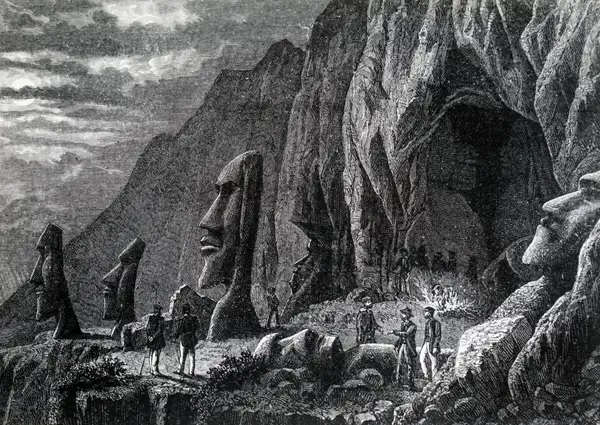
Davis also discovered numerous stone statues standing near the shoreline, all sculpted with human facial features. However, he could not explain their origins. Baffled by these enigmatic findings, Davis named the island “Desolate and Curious Land.”
The Age of Exploration during the 15th to 16th centuries laid the foundation for European maritime activities. With advances in ship technology, European colonizers began to expand rapidly, seeking overseas territories.
In 1805, European colonizers landed on Easter Island, employing absolute force to capture the indigenous inhabitants, the Rapa Nui people, as slaves. By 1862, these aggressors returned to the island, enslaving over 1,000 Rapa Nui men and transporting them to Peru for sale. However, their actions quickly faced international condemnation, as they were viewed as complicit with pirates and violators of the basic rights of another nation’s inhabitants.
Under pressure from international opinion, the Peruvian government ordered the return of all slaves to Easter Island. Unfortunately, due to the hardships of violence and disease, the Rapa Nui population suffered heavy losses, and only 15 men eventually set foot again on their homeland. The last descendants of the legendary founding chief Hotu Matu’a were among those who perished, including chiefs and priests of Easter Island, pushing the Rapa Nui people to the brink of extinction.
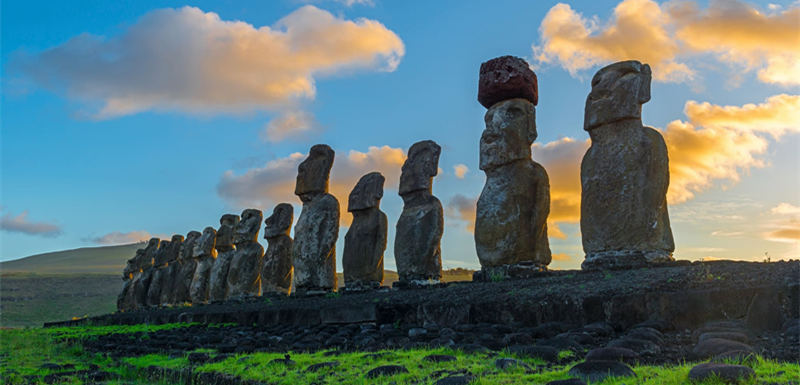
The nightmare was far from over, as the following year, French missionaries led an expedition to Easter Island. In their efforts to propagate their faith, they decided to eradicate the island’s culture entirely. Armed with firearms, these invaders scoured the island for any objects related to the local culture and, with a single command, set them ablaze, effectively erasing the Rapa Nui culture. However, some islanders, despite their inability to resist, harbored deep resentment for these atrocities. They risked their lives to hide 25 wooden tablets inscribed with their native script, known as the “Rongorongo” tablets.
Now, Easter Island has gained international recognition, becoming a popular destination for tourists worldwide. Visitors can not only savor a variety of local cuisines and enjoy the breathtaking views of the monumental seaside statues but also, in February, witness the grand annual ritual of the island’s inhabitants, offering a unique experience of the island’s mysterious culture and tumultuous history.
The Mystery of the Rongorongo Tablets
Over a decade later, Easter Island became part of Chile, with the Chilean government leasing nearly all of the island’s land for cattle and sheep grazing. This move provided the island’s residents with a national affiliation, leading to a significant development of local industries and a gradual increase in the population. This peculiar and tumultuous history quickly drew the attention of Chilean archaeologists, who embarked on a journey to the island to study its Easter Island statues and cultural heritage.
To the astonishment of archaeologists during their investigation of Easter Island, they stumbled upon the long-concealed “Rongorongo tablets.” The script inscribed on these tablets is known as “Rongorongo.” Most of these tablets are irregular pieces of wood, resembling wooden plaques, adorned with some chief’s staffs, birdman figurines, and other ornaments, representing the essence of Rapa Nui culture.
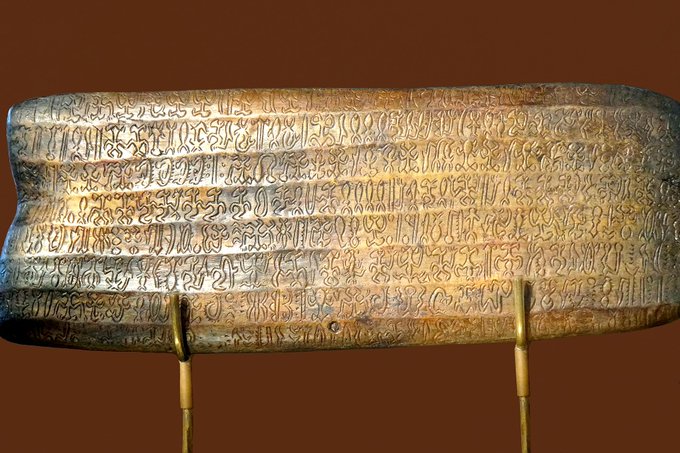
Archaeologists conducted systematic research on the “Rongorongo script,” determining that it likely contains information about calendars and genealogy. However, they were unable to fully decipher its textual meanings. In their quest to unravel the secret of Rongorongo, they sought out the local inhabitants, yet none of them were familiar with the script. It was only from one local resident that they learned of an elderly individual who could read the script, although he lived quite a distance away, and his current status was unknown.
With a glimmer of hope, archaeologists followed the clues to locate the home of the elderly literate individual. However, they were met with the sight of a dilapidated house. Nearby residents informed them that the elderly man had passed away five years earlier, and he had never married or left any descendants.
With their last hope shattered, archaeologists found themselves once again plunged into profound bewilderment. Nevertheless, in their subsequent research efforts, they made several new discoveries, believing that the inscriptions on the Rongorongo tablets likely detailed the lives, rituals, fishing, and hunting practices of the Rapa Nui people, summarizing their production and existence. As for whether they can fully decipher the script, archaeologists stated that further efforts are still needed.
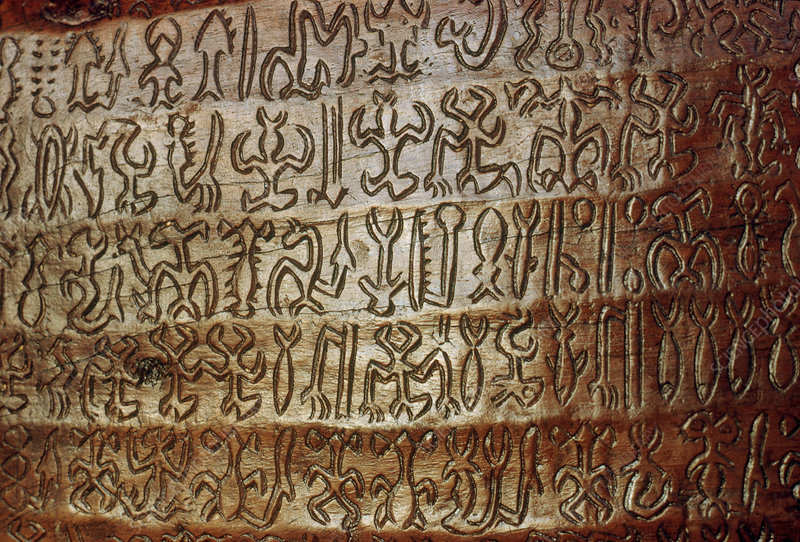
Today, Easter Island has gained international fame and become a sought-after destination for tourists from around the world. On this remarkable island, visitors can not only savor various local delicacies and admire the stunning seaside statues but also, in February, have the privilege to witness the grand ceremonial rituals of the local inhabitants, immersing themselves in the island’s unique and mysterious culture and rich history.
END:
Just like these mysterious stone statues, these Rongorongo writings remain undeciphered to this day. Some believe that the Rongorongo script might contain information about the Moai stone head sculptures, possibly revealing details about their creation, the timeline of their construction, and even the meanings they represent. However, decoding these enigmatic writings is a formidable challenge, demanding scholars to invest considerable time and effort in studying the language, culture, and history of the Rapa Nui tribe. Yet, whether motivated by curiosity about the Rapa Nui civilization or admiration for the creativity of the Rapa Nui tribe, scholars remain determined to decipher these texts, with their resolve undiminished.
More UFOs and mysterious files, please check out our YouTube channel: MysFiles
Mysterious Stone Spheres around the world – Costa Rica, European forest, Russia, Kazakhstan
